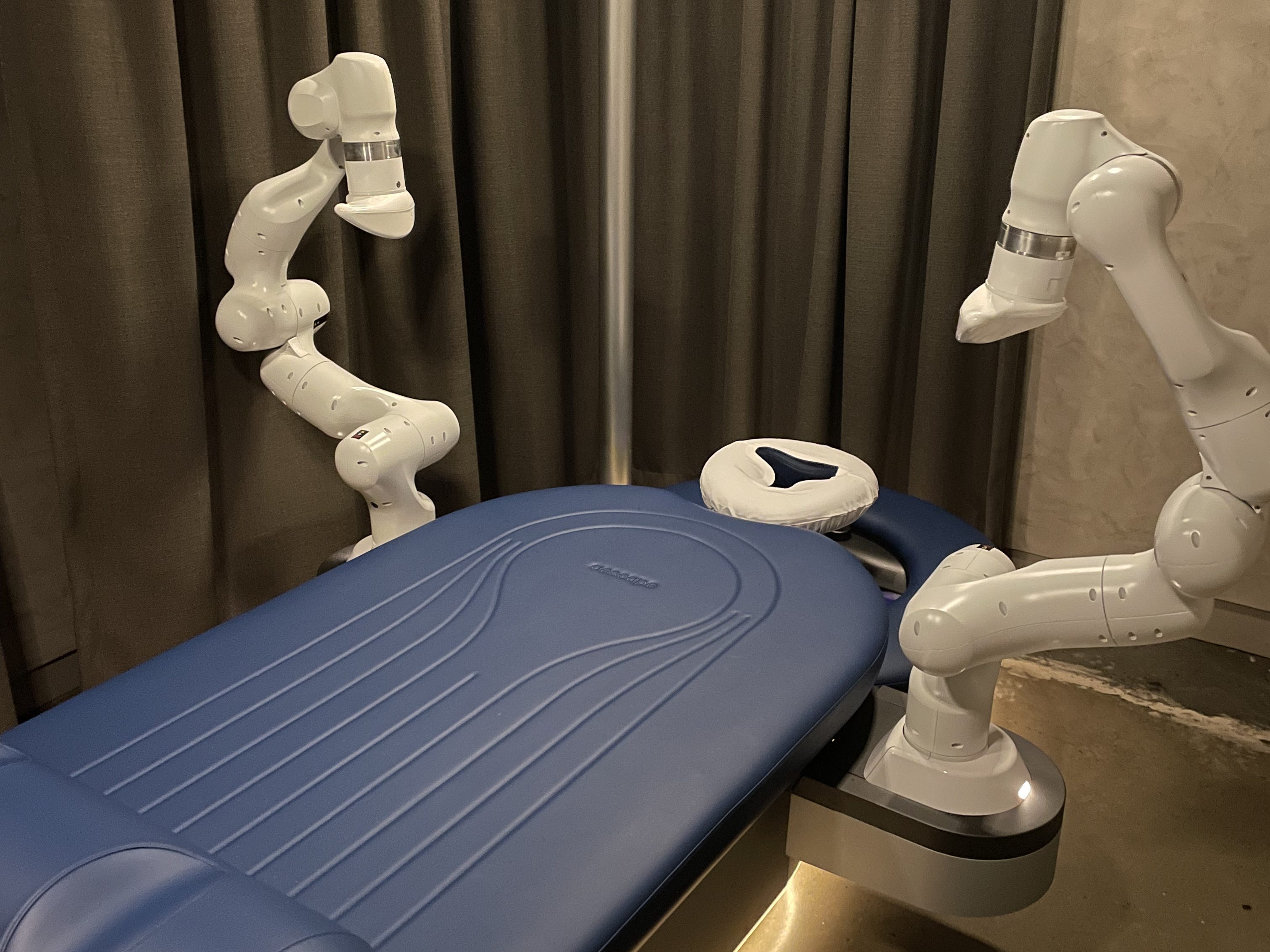
Tess Martinelli/BI
- AI-powered robot massages are now available at over 100 locations in the US.
- The wellness industry is adopting AI, reflecting the wider shift toward replacing human roles.
- I visited a high-tech spa in NYC and received an AI robot massage to see what it’s really like.
I desperately want to love massages, but the concept of a stranger rubbing oil onto my body slightly makes me want to crawl out of my skin. So, when I came across an AI-powered robot massage at a high-tech spa in New York City, I was intrigued and skeptical.
The technology at Remedy Place Spa, created by Aescape, became commercially available in the US in early 2024. It’s just one of the many “tech remedies” this social wellness club offers, alongside hyperbaric chambers and lymphatic compression.
Aescape now has its equipment in over 100 US locations and recently partnered with Tom Brady to further develop the product. The spa and beauty industries are increasingly embracing automation, with some companies developing robots that can handle everything from manicures to cosmetic procedures, like filler injections, with precision. The rise of robots and AI in the wellness space reflects a broader movement toward automation and the growing role of AI in replacing human jobs.
I was reviewing spas as a freelancer before working at Business Insider when Remedy Place offered me a free AI massage. The treatment normally costs $99 for 60 minutes — and presumably, you don’t have to tip the robot. I never thought I’d be able to say I listened to “Coconuts” by Kim Petras while two robot “hands” dug into my hamstrings, but even more surprising is that this wasn’t the weirdest part of my trip.
The spa itself felt like an alien spaceship.
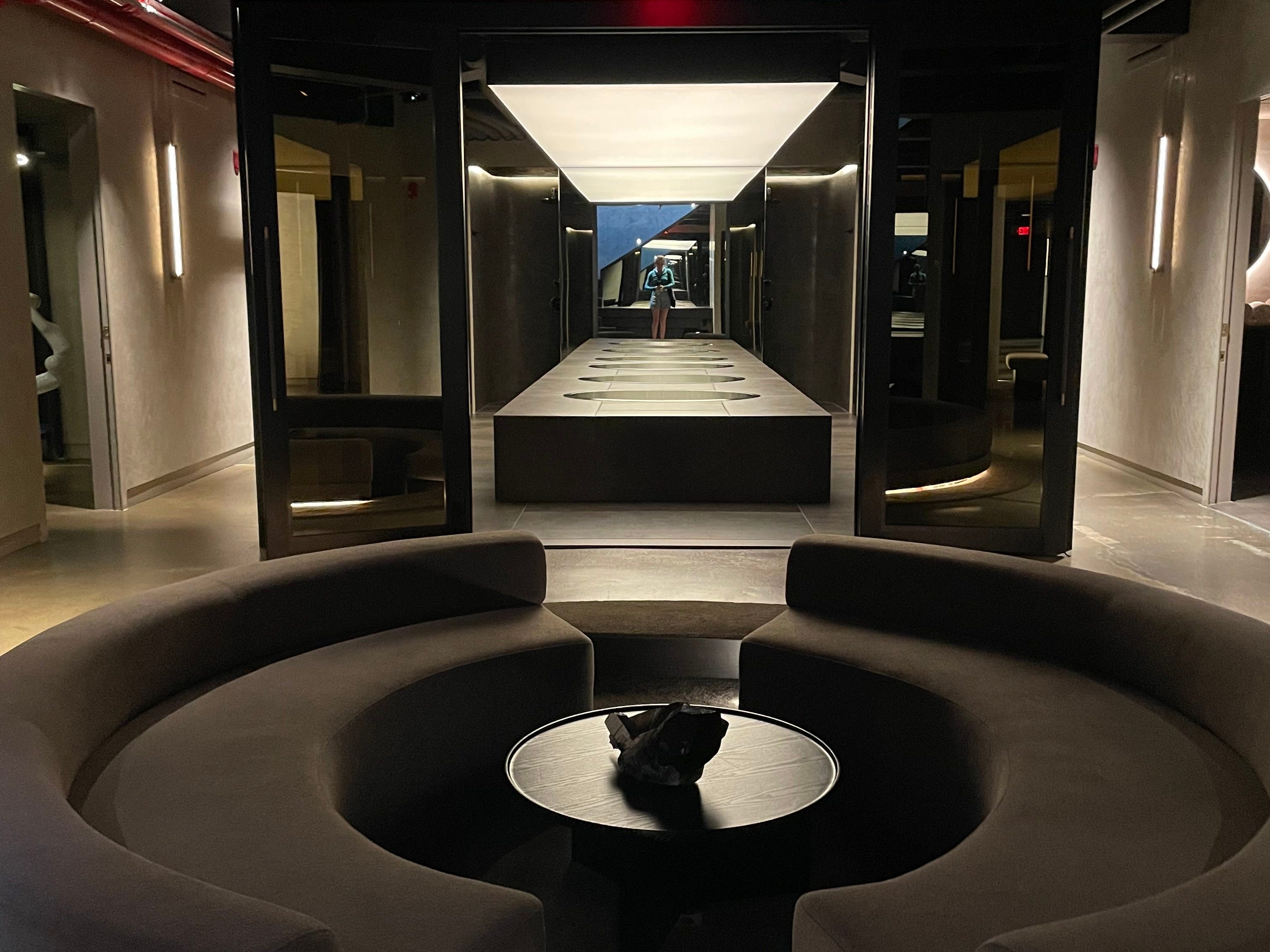
Tess Martinelli/BI
Upon entry, I was handed a free bottle of New Zealand-sourced artisan water and swiftly ushered through a tour of the futuristic space. I imagined this is how it would feel if Elon Musk opened up SpaceX.
The space had dim lighting, rounded furniture, and an ultramodern interior design juxtaposed with floor-to-ceiling windows and lush plants sprouting from beneath the floor. Most of its services were offered in private rooms, while others, like its cold plunge tubs, were in the center of the space.
I didn’t see many people in the facility.
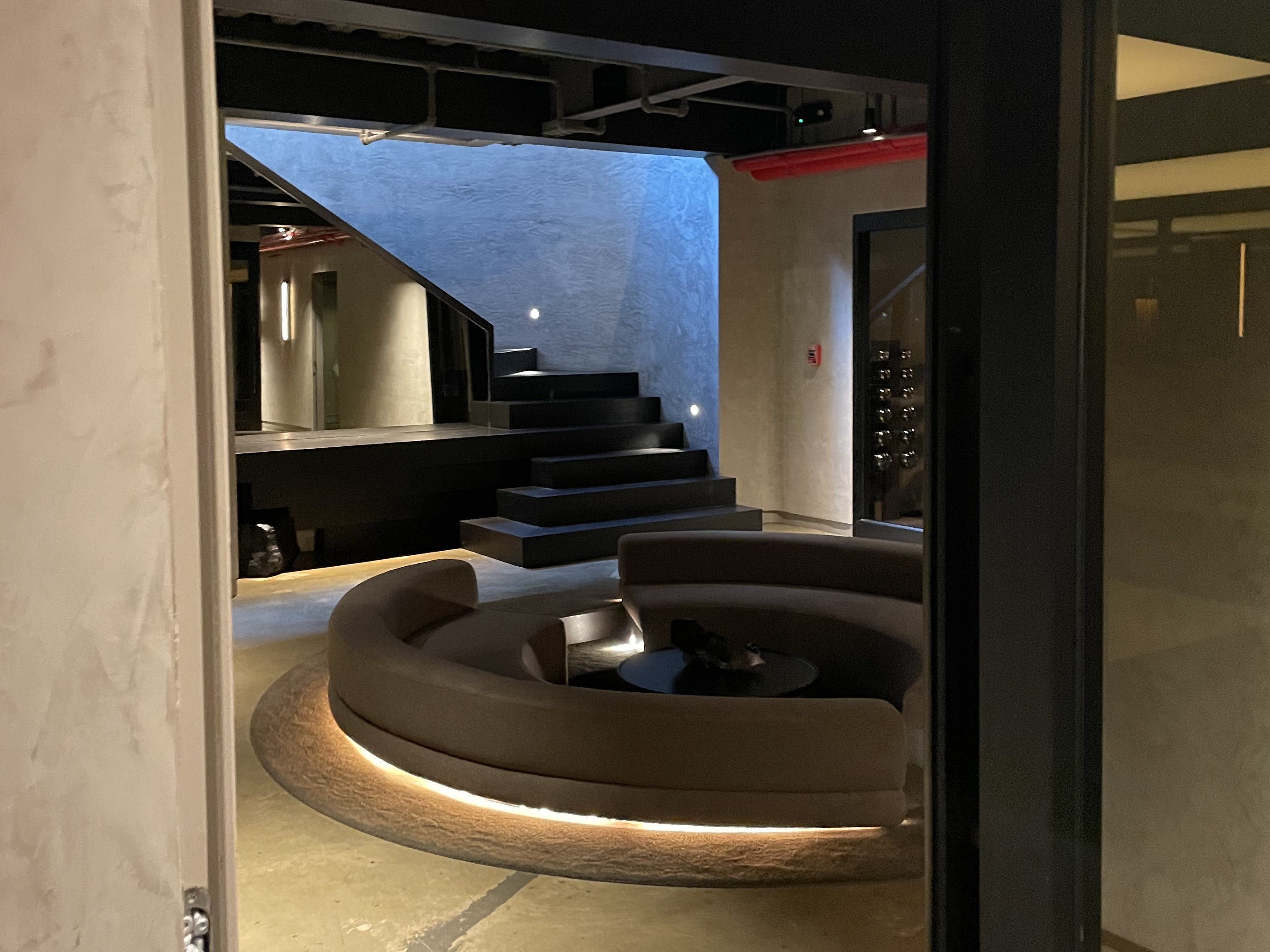
Tess Martinelli/BI
While walking through the facility, I passed a woman casually working on her laptop — inside a hyperbaric chamber, which is basically a pressurized oxygen pod with a mask and tubes. I felt like an alien touring a modern human zoo. Terrifyingly confronting.
Finally, I was brought to the AI massage room by a human (I can’t believe I have to specify this), where I found a contraption much more basic than the rest of the space suggested. It was essentially a normal massage bed with two robot arms jutting out and an iPad-sized tablet positioned under the face hole.
I was instructed to put on a skintight, gray bodysuit — really leaning into the alien cosplay.
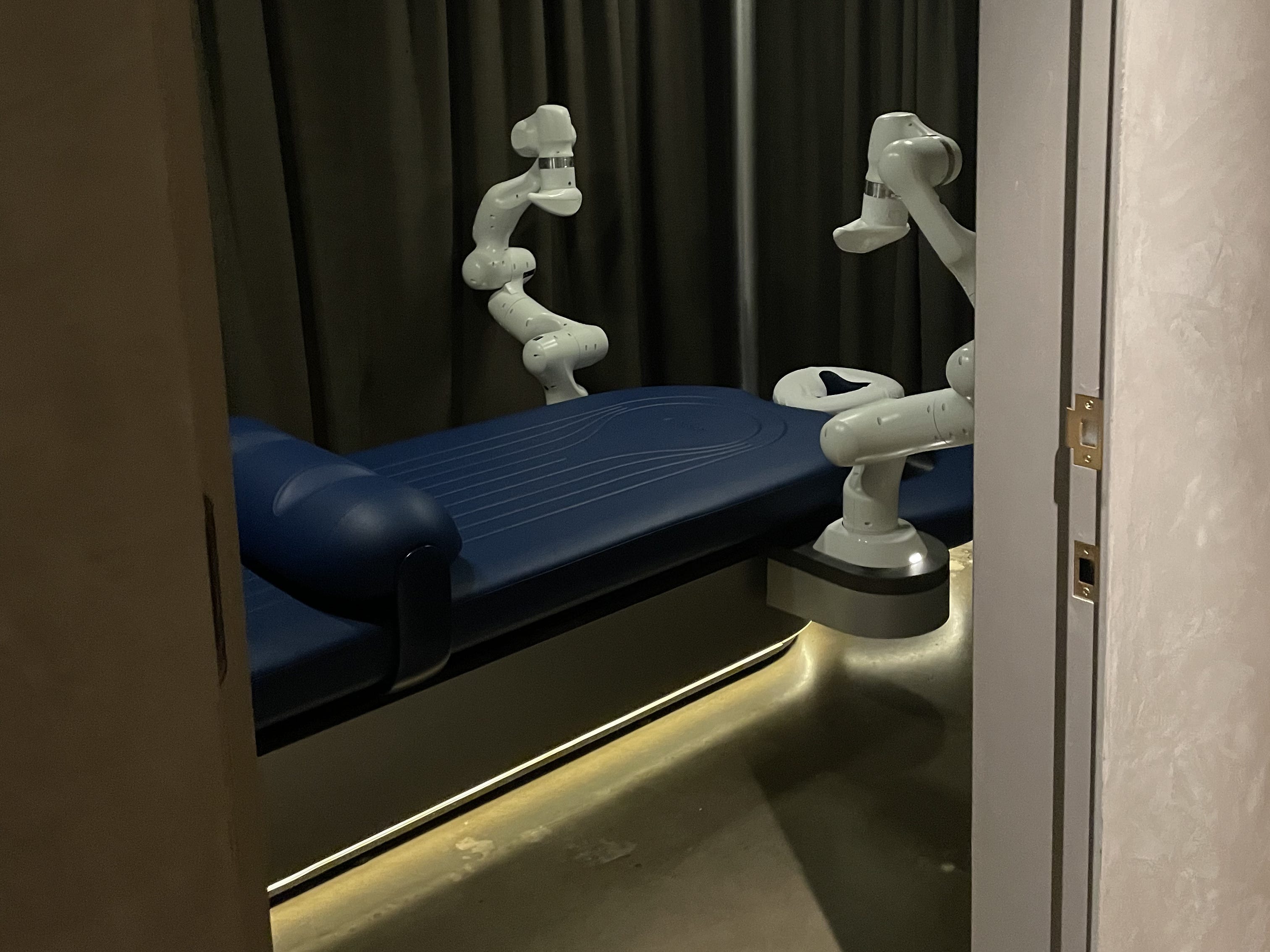
Tess Martinelli/BI
After I suited up, the attendant returned and told me to lie facedown on the table for a bodyscan. Then, about a minute later, the tablet projected a high-definition 3D image of my body, which was a jumpscare I was not prepared to see.
According to the attendant, this helped the robot know where I was and allowed me to control its movements more precisely. Once everything was set up, she left me alone with my new mechanical masseuse and encouraged me to tailor my experience with the tablet.
I was a bit scared of my AI masseuse.
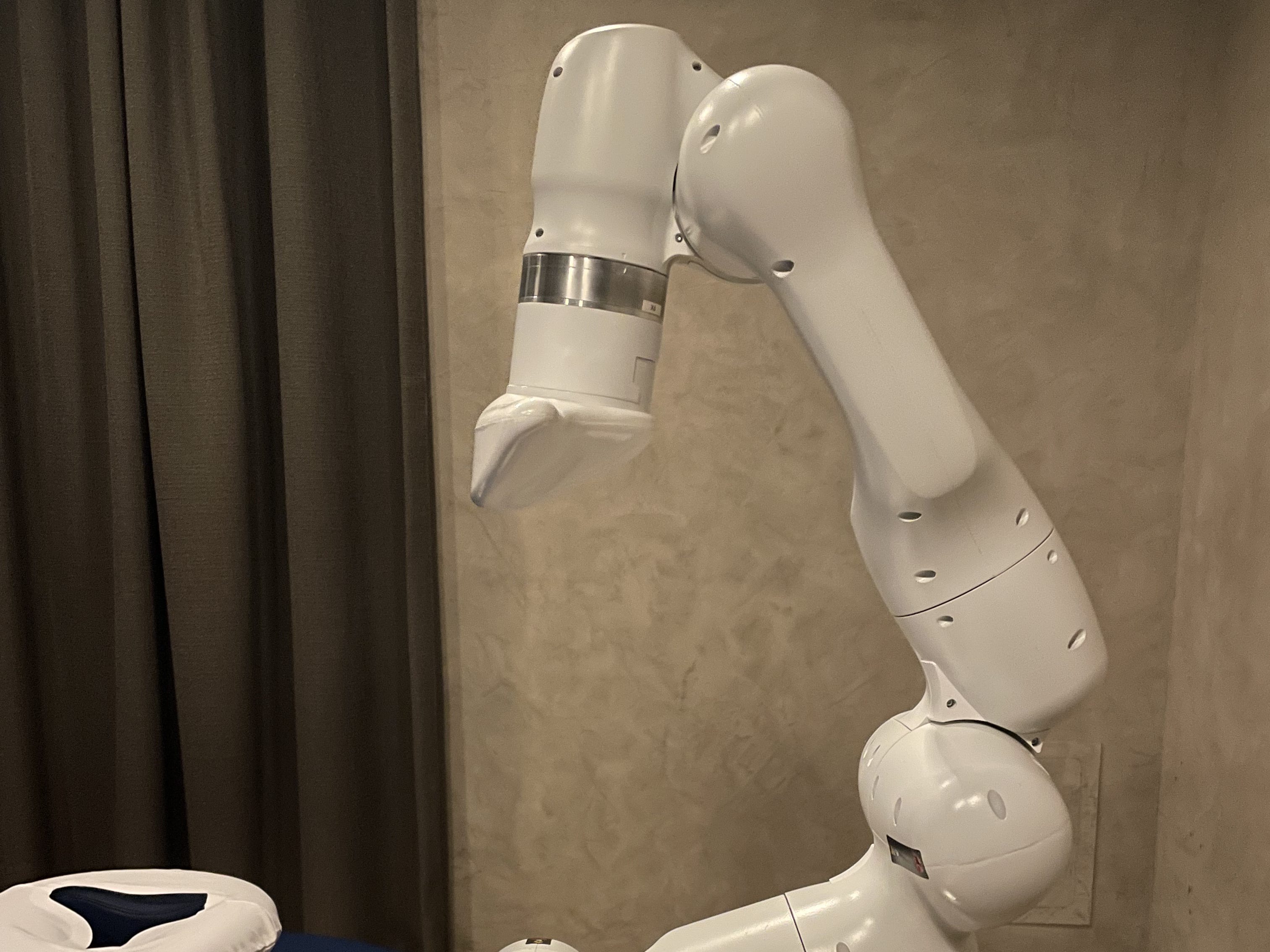
Tess Martinelli/BI
When the robot turned on and placed its hands, roughly the size and weight of human fists, on my back, I immediately tensed up. I sent up a silent prayer that all the “pleases” and “thank-yous” I’d ever said to ChatGPT might buy me some goodwill with the machines.
Despite the initial discomfort, I slowly relaxed as the robot swept up and down my back, mimicking a Swedish massage. I’ve had a few Swedish massages in the past few years, and to my surprise, it did kind of feel like a human. That’s when the glow of the touchscreen 10 inches below my face became impossible to ignore.
The real fun was the tablet.
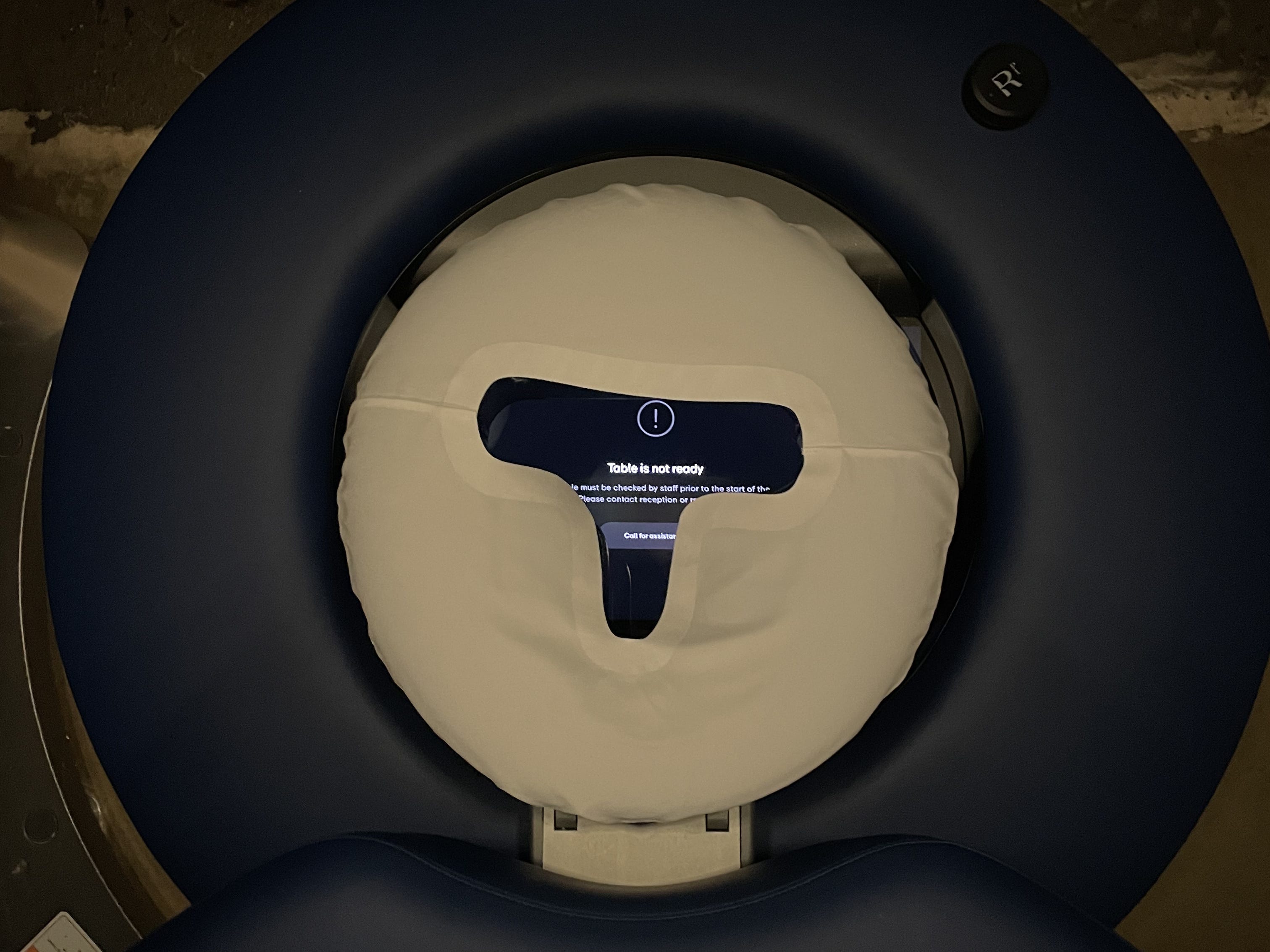
Tess Martinelli/BI
My 3D body was still on-screen, now with two orb-like icons tracking the robot’s movements. Alongside it were options to adjust intensity, pause, or stop. The interface walked me through each moment: what part of my body it was working on, what technique it was using (lengthening, relaxing), and for how long.
Naturally, I started exploring. I found options to change visuals and music, which turned my massage into a dissociation session on the tablet. The playlists covered everything: hip hop, chill EDM, indie rock, rain sounds, and even Brat Radio. The ability to skip songs was intoxicating, thus prompting my eventual foray into “Coconuts” by Kim Petras.
The room was dimmed, but I got to choose my visuals on the tablet, such as sticking with the 3D scan or switching to rainfall, snowfall, rippling water, or just a plain black screen. By then, the novelty had faded, so I tried to mimic the ambiance of a typical massage by putting on relaxing music and the black screen.
I have mixed feelings about my AI massage.
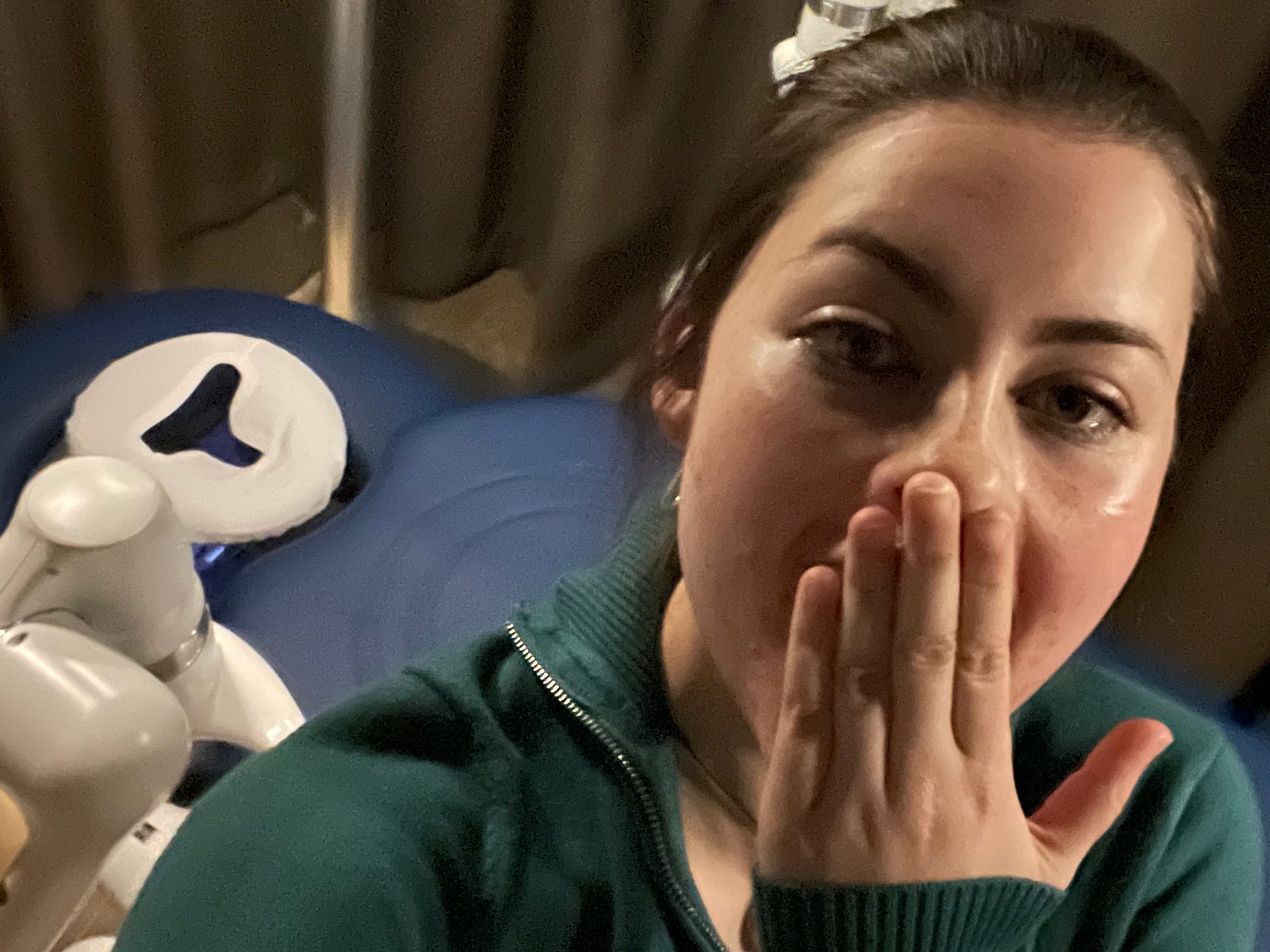
Tess Martinelli/BI
My body finally adapted to the robot, and it was genuinely relaxing — though I still flinched when it pressed near my spine and vital organs. When it was over, I (shockingly) found myself preferring the touch of a human who could adapt in real time.
While I loved skipping the awkward small talk in favor of uninterrupted “me” time, I preferred the intuition, emotional presence, and diversity of a real masseuse’s touch.
The tablet was a fun novelty, but as someone who already spends most of my day staring at screens, I kind of wished for an hour away from one.
At $99, it’s a solid option for people who want solitude and full control over their massage experience, but I’m not sure I’ll be going back.
Do you have an experience with an AI robot to share? Contact this reporter at [email protected].
Read the original article on Business Insider
The post I got a $99 massage from an AI robot and will probably never do it again. Here’s why, and what surprised me the most. appeared first on Business Insider.




